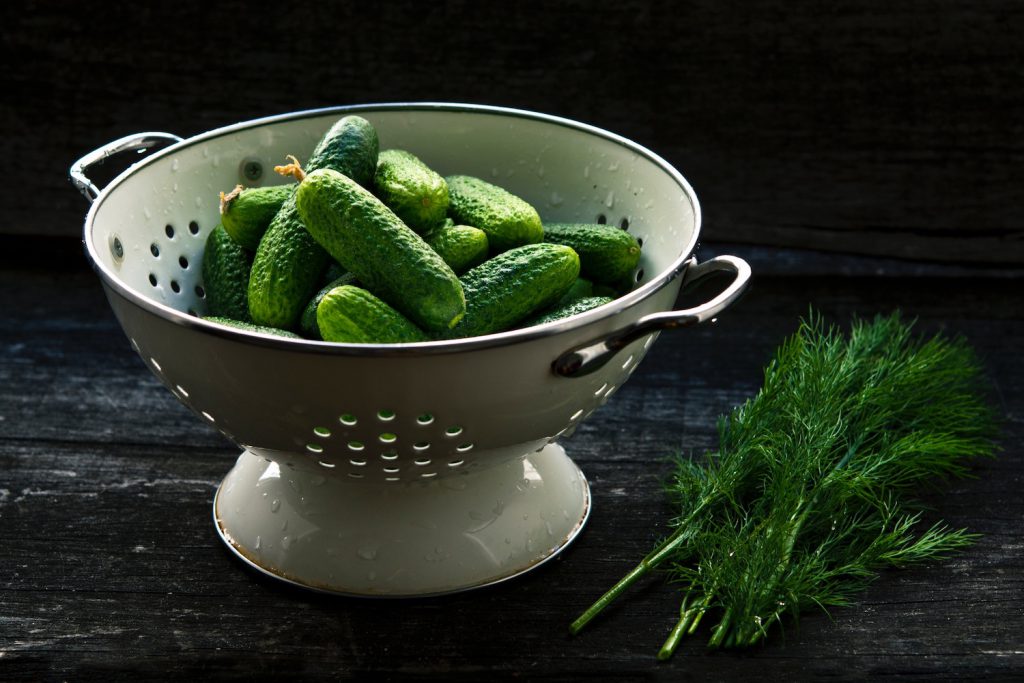
Although I love pickles year-round, I do find that I make them much more often during the summer. This is probably due to the abundance of fresh produce. However, when I make pickles, I make the variety referred to as fridge pickles. This is because fridge pickles do not require the canning, vacuum seals, or sterilized jars that traditional pickling requires. You can use fancier equipment like a mandoline or a julienne peeler to make quick work of cutting up vegetables into thin strips or pieces. However, a sharp knife can work just as well. Below are some basic rules to follow for making fridge pickles:
Basic Fridge Pickle Rules
- Create the pickling mixture or brine. The brine can be adjusted to make the pickles sweeter or saltier. (See simple brine recipe below)
- While the brine is cooling, make sure to wash to your vegetables before cutting them. You can chop the vegetables however you like. I prefer smaller pieces that will absorb the brine better, so I either dice or thinly slice the vegetables
- Place your chopped vegetables between various containers. Pour the brine over the vegetables and refrigerate until needed. The pickles will get slightly more pickled as they sit, but the taste shouldn’t change too much after the 24-hour mark. You will want to wait at least a few hours before consuming them, and they are even better after sitting overnight. If the vegetables are submerged in the brine, the pickles can be stored in the fridge for up to 2 weeks.
The possibilities for fridge pickles are really endless. So, I suggest mixing up the veggies (or fruit) and spice combinations. I really like this recipe, where you pickle diced celery to put in egg salad. I have also done pickled onions and jalapenos for taco toppings.
Pickling Mixture or Brine:
Ingredients:
- 1 cup distilled white vinegar
- 4 tablespoons sugar
- 2 tablespoons Kosher salt
- 2 tablespoons yellow mustard seeds
- 1 cup cold water
Directions:
- Heat vinegar, sugar, Kosher salt, and mustard seeds to a simmer in a small, non-reactive pot (ex. stainless steel) over moderate heat, stirring only until the sugar and salt dissolve.
- Stir in water, which should bring the mixture’s temperature down.
- Let the mixture cool to lukewarm. Glass containers may crack if boiling water is poured into them.
*Pro Tip from NC Cooperative Extension: If using cucumbers…they have a stem end and a blossom end. The blossom end is the very first growth of the cucumber and contains enzymes which can cause softening. This end is where the blossom attached to the cucumber. It’s important to slice the blossom end off. Trim just 1/16 of an inch. This will keep the pickles from softening.
If you have made fridge pickles, leave your favorite recipe in the comments!
Don’t miss another great blog: Subscribe Now
